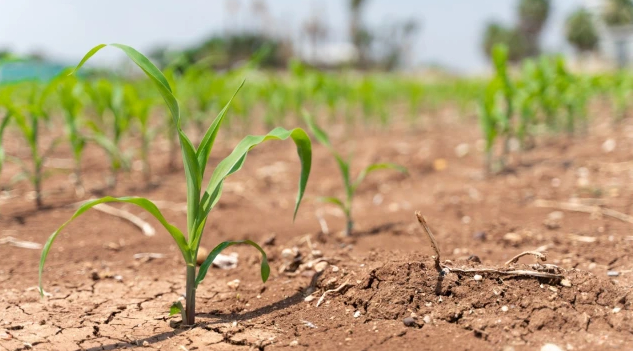May 30, 2025 | 15:53 GMT +7
May 30, 2025 | 15:53 GMT +7
Hotline: 0913.378.918
May 30, 2025 | 15:53 GMT +7
Hotline: 0913.378.918
In the years since, however, we’ve developed much better options and learned a lot about the shortcomings of these fuels when it comes to reducing emissions and optimizing land use.

Photo: iStock
Now that the original RFS targets have expired, the Environmental Protection Agency (EPA) has the responsibility to set new biofuel volume targets, which it will finalize in the coming months with the goal of increasing U.S. energy security and reducing the environmental impact of relying on gasoline and diesel fuel. To make true progress fighting the climate crisis, EPA must learn the lessons from original RFS targets’ unintended consequences and set new targets accordingly.
Transitioning away from fossil fuels is essential to fight the most dangerous impacts of climate change and meet the U.S.’s goal of reaching net-zero emissions by 2050. Under the RFS, EPA mandates that a certain percentage of the nation’s transportation fuel supply be made up of “renewable fuels,” such as corn-based ethanol, biodiesel and biogas derived from manure.
EPA has proposed standards that would aim to have almost 21 billion gallons of renewable fuels in the energy mix by 2023 — nearly three-quarters of which could be made up by corn ethanol and other “conventional biofuels.” By the end of 2025, the RFS would increase the renewable fuels requirement to almost 23 billion gallons, or about 12 percent of U.S. gasoline and diesel consumption in 2022.
Here’s the problem: Cellulosic ethanol, which was expected to be the primary source of renewable fuel by now, has completely failed to materialize as our energy savior. The original RFS anticipated that by 2022 there would be 21 billion gallons of ethanol made from cellulosic materials, such as corn stover and switchgrass, rather than from corn kernels or other crops. Instead, the renewable fuels supplied in 2022 consisted of 14 billion gallons of corn ethanol and about 6 billion gallons of other biofuels, but zero gallons of cellulosic ethanol.
As a result, 60 million acres of prime U.S. farmland is being used to produce fuel rather than food. This makes no sense from a climate or equity perspective given the growing global land squeeze that threatens food security near and far. The greenhouse gas emission impacts of corn ethanol compared with petroleum-based fuel are controversial and difficult to assess, but when the opportunity cost of using prime farmland to produce fuel rather than supply food or sequester carbon is taken into account, it becomes clear that doing so makes the climate crisis worse, rather than better.
In addition, it is now clear that electric vehicles running on carbon-free power are the way to eliminate emissions from cars and trucks. One key reason is that it takes 300 times as much land to move an internal combustion engine vehicle running on corn ethanol a given distance compared with using solar panels to power an electric vehicle (EV). Biodiesel is even less land-efficient than corn ethanol.
Another reason is that the cost of both solar and EVs have fallen dramatically since the RFS was established, with generous tax credits established by the Inflation Reduction Act making them even more cost-effective. Ironically, EPA has recognized this in a separate proposal to dramatically reduce vehicle tailpipe emissions, which is expected to result in two-thirds of all new cars being electric by 2032.
It’s understandable why farmers and biofuel producers have supported the RFS’s past goals, which have subsidized their hard work to grow crops in an environment with increasingly unpredictable weather patterns. But at a time where strong climate action and optimal land use has never been more important, we need to change tactics and reduce harmful incentives. As the world’s population grows to 10 billion people and gets wealthier, we need American farmers to use their extraordinary productivity to supply food rather than fuel.
In comments filed on EPA’s proposal, my organization, the World Resources Institute, and Earthjustice have urged EPA to set RFS volumes for only one year at this time, rather than three, to give the agency time to complete a more thorough reassessment of the environmental impacts of biofuels and align the RFS program with the new realities of the transportation sector. That means allowing ethanol use to decline proportionately with gasoline consumption as our vehicle fleet becomes more efficient and electrified. And it means focusing farmers on the opportunity to convert waste materials, such as corn stover, into fuel for difficult-to-electrify applications, such as aviation.
The Biden administration’s strategy for decarbonizing the transportation sector rightly relies on electrification, not biofuels, as its main solution. As EPA comes to a final decision on revising RFS in the coming months, it must fundamentally revamp its proposal to move away from dedicating land to biofuels production and adopt a policy that is consistent with the administration’s climate strategy.
(The Hill)

(VAN) Vikas Rambal has quietly built a $5 billion business empire in manufacturing, property and solar, and catapulted onto the Rich List.

(VAN) Available cropland now at less than five percent, according to latest geospatial assessment from FAO and UNOSAT.

(VAN) Alt Carbon has raised $12 million in a seed round as it plans to scale its carbon dioxide removal work in the South Asian nation.

(VAN) Attempts to bring down the price of the Japanese staple have had little effect amid a cost-of-living crisis.

(VAN) Fourth most important food crop in peril as Latin America and Caribbean suffer from slow-onset climate disaster.

(VAN) Shifting market dynamics and the noise around new legislation has propelled Trouw Nutrition’s research around early life nutrition in poultry. Today, it continues to be a key area of research.

(VAN) India is concerned about its food security and the livelihoods of its farmers if more US food imports are allowed.